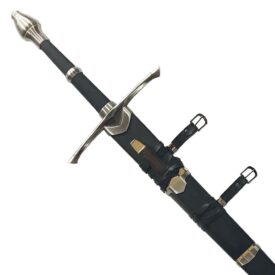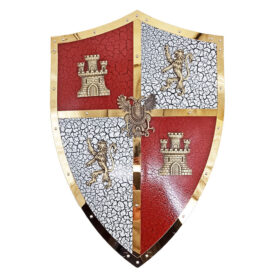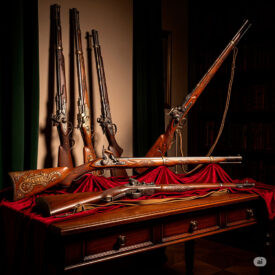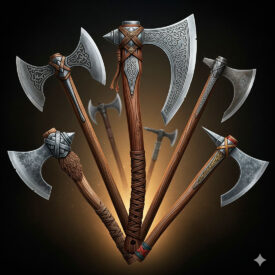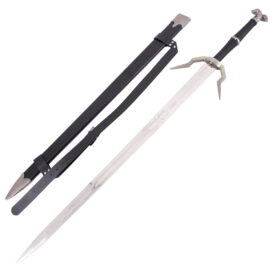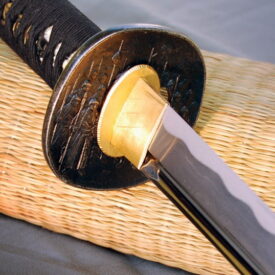From the frozen lands of the north, stories of Vikings resonate with the force of an uplifted axe. The acclaimed series Vikings has captured the imagination of millions, immersing us in a world of epic battles and legends forged in steel. But how real are the impressive swords and weapons wielded by characters like Ragnar Lothbrok or Lagertha? Do the materials and forging of these weapons reflect the raw reality of the Viking Age, or are they a product of television fantasy?
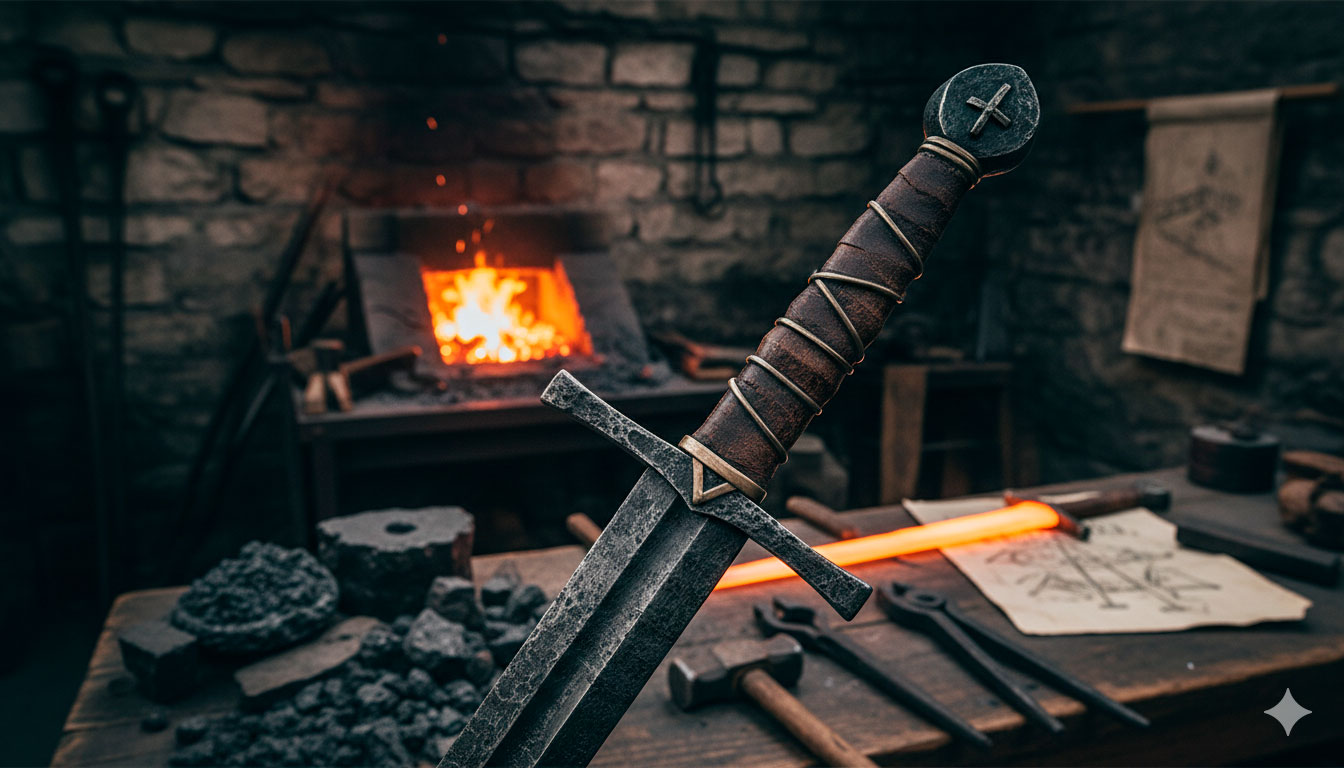
This article will guide you through the exciting truth behind the swords of Vikings, revealing the differences between screen props, modern replicas, and the authentic weapons wielded by Norse warriors. Prepare to discover how history intertwines with fiction in the fascinating universe of Viking weapons.
The Shadow of Ragnar: Key Characters and the Plot of Vikings
The series Vikings immerses us in the life of the legendary Norse warrior Ragnar Lothbrok, an explorer and charismatic leader whose ambition led him to challenge the known limits of his world. Inspired by the Viking sagas, the series portrays his daring incursions to the west, forging a legacy that transcended his time.
Alongside him, figures such as the fierce shieldmaiden Lagertha, his cunning brother Rollo, his ingenious boat-builder friend Floki, and his brave son Bjorn Ironside, form a cast of characters whose lives and battles have been etched into the memory of viewers. The series, produced by History Channel, stands out for its meticulous recreation of Viking culture, religion, and customs, though not without taking certain dramatic liberties for entertainment.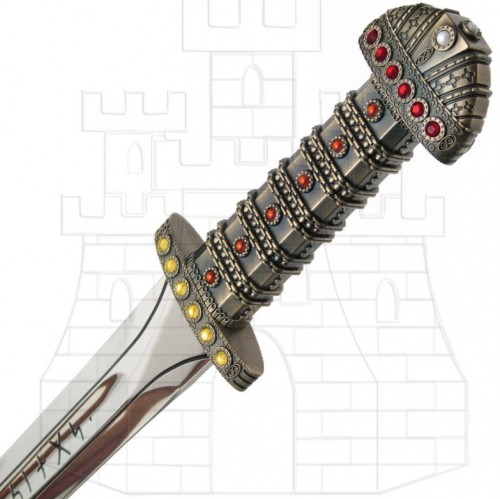
Among the most iconic weapons we see on screen, the Sword of Kings, a relic that passed through the hands of monarchs like King Horik before being wielded by Ragnar, stands as a symbol of power and leadership. Its hilt, adorned with imitation gems and a blade engraved with runes proclaiming “Sword of Kings”, is a clear example of the stylized representation of weapons in the series.
Likewise, Lagertha’s Viking Sword, the formidable warrior and Ragnar’s first wife, is another memorable piece. Lagertha, a semi-legendary Valkyrie, demonstrated her prowess in combat, forging her own legend alongside the men. These swords, both Ragnar’s and Lagertha’s, are replicated for enthusiasts, offering a tangible connection to the mythical universe of Vikings.
Chronology of Swords in Vikings: Between History and Recreation
To understand the authenticity of the swords in Vikings, it is fundamental to place the historical context against the creative liberties of the series and the characteristics of modern replicas. This chronology will help you visualize how these worlds intertwine.
| Era / Framework | Event / Observation |
|---|---|
| Viking Age — 9th Century (historical context) | |
| 9th Century | Historical Viking swords were symbols of nobility and status. Many of the best blades were imported or looted from Frankish territories. |
| Typical Design | Double-edged swords, straight blade, short guard (small handguard) and ornamented pommel; in some cases Carolingian influences (similar to the Carolingian sword attributed to Ragnar). |
| Techniques and Production (historical) | |
| Traditional Forging | Complex manufacturing: precise alloys, techniques such as pattern welding. Crafting a good sword could take months. |
| Social Availability | High cost of swords made them elite weapons; less affluent combatants used spears, axes, and seaxes more frequently. |
| Contemporary Representation: “Vikings” series (filming and props, 2013–2020) | |
| Type Attributed in Series | Ragnar is associated with a Carolingian sword in terms of design (double-edged, straight blade, short guard, and ornamented pommel), used as an iconic attribute of the character. |
| Combat Props | For filming and long combat scenes, lightweight and safe materials are used: for example, actor Alexander Ludwig (Bjorn Ironside) uses an aluminum sword in many sequences to reduce the risk of injury. |
| Dramatic Liberties | The series takes liberties: it frequently shows numerous soldiers armed with swords (historically implausible) and adapts shapes and quantities for dramatic effect. |
| Merchandising and Modern Replicas | |
| Replicas Associated with Characters | Commercial replicas exist named “Ragnar Lothbrok’s King’s Sword” or “Viking Ironside Sword” (also mentioned as Wikinger*schwert* / Cóndor), intended for collecting and not necessarily faithful to an exact historical pattern. |
| Material in Replicas | Commercial replicas often use modern materials (commercial steels or alloys), and designs are often stylized for the market and for safety, different from historical forging. |
| Observations on Authenticity and Design | |
| Historical Accuracy | The weapons seen in the series are primarily a dramatic fictionalization: they are inspired by period designs but are not historically exact copies. The short handguard and the dependence on a shield for defense do reflect real historical practices. |
| Complementary Weapons | Ragnar’s legend is also strongly associated with the Viking axe; furthermore, spears and the seax were common weapons among Norse warriors. |
Reality or Fiction? Materials and Forging in the Viking Age
The weapons we see in Vikings are a visual delight, but were swords forged this way in the age of the Norsemen? The truth is that the production of Viking swords was an extremely complex and costly art, making them symbols of status reserved for the elite: jarls, leaders, and kings. Each forge was a metallurgical feat that could take months to complete, using advanced techniques for the time such as pattern welding, which sought to combine the flexibility of a low-carbon steel with the hardness of a high-carbon steel.
The best Viking swords were often not forged in Scandinavia, but imported or looted from Frankish territories, where forging techniques were more advanced. Once obtained, they could be melted down and personalized. The hilts, for their part, often incorporated materials such as tanned leather, bone, or even silver, making each sword a unique piece.
The Viking Design Forged on Screen: Authenticity vs. Dramatism
 The series Vikings, although inspired by history, takes creative liberties for dramatic impact. Prop swords, such as those wielded by Alexander Ludwig (Bjorn Ironside), are often made of lightweight aluminum for the safety of the actors during long and demanding combat scenes. This contrasts with the heavy and robust historical swords designed for real battle.
The series Vikings, although inspired by history, takes creative liberties for dramatic impact. Prop swords, such as those wielded by Alexander Ludwig (Bjorn Ironside), are often made of lightweight aluminum for the safety of the actors during long and demanding combat scenes. This contrasts with the heavy and robust historical swords designed for real battle.
Regarding design, swords attributed to the 9th century, such as the famous Carolingian sword associated with Ragnar, featured a double edge, a straight blade, a short guard, and an ornamented pommel. This lack of a large guard protected the hand, as Viking warriors relied more on their shield for defense, using the small guard only to prevent the hand from slipping when thrusting. Although the series shows numerous soldiers armed with swords, in historical reality, the spear and axe were much more common among average warriors.
Modern Replicas: A Bridge Between Past and Present
The rise of Vikings has sparked a great demand for replicas, allowing fans to own a piece of that epic. These replicas, whether official or not, are manufactured to evoke the aesthetics and symbolism of the weapons from the series and the Viking Age, albeit with very different methods and materials than the originals.
The blades are usually made of stainless steel (such as type 420) or 1095 carbon steel, a functional material of good quality, tempered for greater strength. Elements such as guards and pommels are made with zinc alloys, and the grips are covered in leather for visual authenticity. The engravings of runes and other details are, for the most part, aesthetic and narrative elements that enhance the attractiveness of the piece. Although these replicas are designed for collecting and display, they are a tribute to the craftsmanship and the fighting spirit of the Norsemen.
Resolve your doubts about the swords in the Vikings series
What specific materials are used in the swords of the Vikings series?
The swords from the Vikings series, in their commercial replicas, are usually manufactured with stainless steel or tempered steel blades, and the handles and guards are made of metal. Some versions include details such as engravings on the blade, precious stone ornaments on the hilt, and runic decorations.
Do the swords in the Vikings series have any real historical origin?
The swords that appear in the Vikings series do not correspond to specific historical weapons, but rather are recreations inspired by the general design of real Viking swords. These series swords often combine stylistic elements from different eras and regions, adapting them for visual and narrative impact, but they do not faithfully represent swords documented in Viking history.
What are the differences between official swords and replicas from the Vikings series?
The differences between official swords and replicas from the Vikings series are significant in several aspects:
Materials and construction
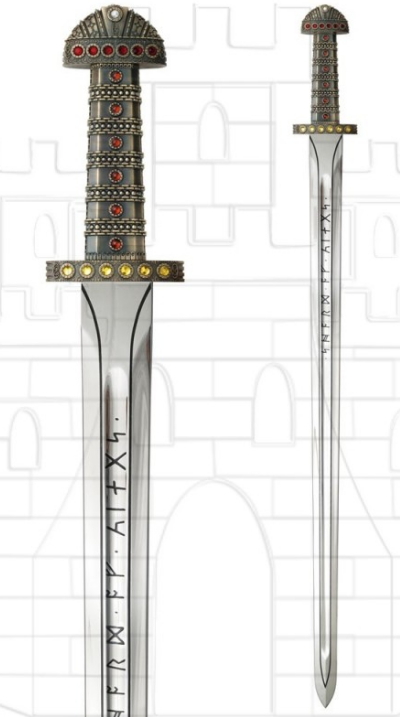 Official swords use noble materials of higher quality, while replicas frequently employ more economical materials. In components such as the hilt and guard, the originals feature a perfect fit, whereas replicas can vary considerably in quality. Some replicas use plastic and rubber instead of the leather that characterizes official pieces.
Official swords use noble materials of higher quality, while replicas frequently employ more economical materials. In components such as the hilt and guard, the originals feature a perfect fit, whereas replicas can vary considerably in quality. Some replicas use plastic and rubber instead of the leather that characterizes official pieces.
Dimensions and proportions
There is a noticeable difference in size between both versions. Unofficial replicas are usually approximately 15 centimeters longer than official versions, which is considerably noticeable at first glance. Additionally, details such as the curvature of certain parts and the quillons (the sword’s crossguard) can vary significantly between versions.
Weight and balance
HBO swords are usually perfectly balanced with an authentic weight designed to faithfully reflect the weapons in the series. Many fan replicas feel lighter, though there are some high-quality versions that convincingly replicate the balance and weight of the originals.
Functionality
Most swords in the series are decorative pieces not designed for practical use. Some high-quality replicas may be suitable for light exercises, but it is strongly advised against engaging in real combat with any of them, as they carry risks of injury.
Price and availability
Official swords usually cost four-figure amounts, while good replicas are available starting from €200. Originals are generally limited in availability, while replicas are easier to obtain on the market.
What symbolism do the runes on the swords in the Vikings series have?
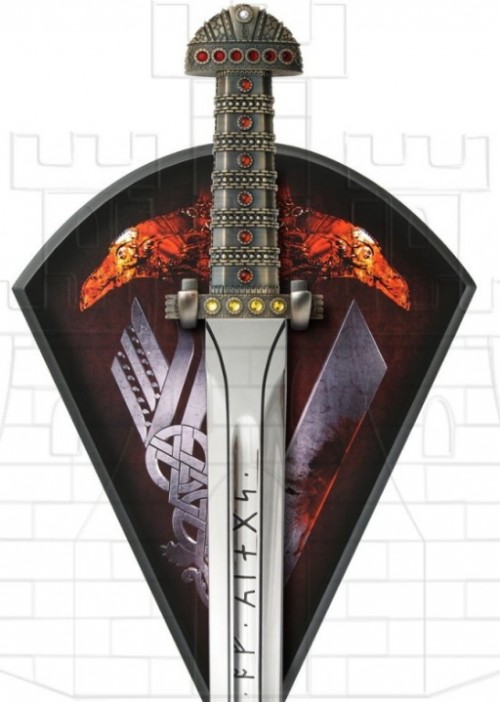 The runes on the swords in the Vikings series symbolize protection, power, and connection to the Norse gods. They are considered magical marks that grant an advantage in battle, reinforce the warrior’s identity, and represent their destiny and spiritual strength.
The runes on the swords in the Vikings series symbolize protection, power, and connection to the Norse gods. They are considered magical marks that grant an advantage in battle, reinforce the warrior’s identity, and represent their destiny and spiritual strength.
How are the swords from the Vikings series manufactured today?
The swords from the Vikings series currently being manufactured are unofficial replicas made primarily with stainless steel or carbon steel blades, with engravings of Viking runes and details on the hilt to mimic the originals used in the series. These swords measure around 105 cm and usually include display stands. Their process involves the use of modern forging, tempering, and finishing techniques to achieve a functional and decorative appearance faithful to those in the series. Some replicas include artificial aging for greater realism.
Additionally, there are artisanal versions that simulate traditional Viking manufacturing, focusing on balancing the sword with specific pommels and guards; hammering, filing, and polishing techniques are used. In the case of swords for cosplay or LARP, materials such as PVC, foam, and thermal silicone are used to create safe and flexible replicas, not for real combat purposes.
Therefore, the current manufacturing of these swords combines traditional methods for functional swords with industrial processes for decorative replicas and replicas for recreational or collecting use, adapting to both the aesthetics and functionality that the Vikings series reflects.
The Legacy of Viking Swords
The swords of Vikings, whether they are the pieces created for the series or the replicas you can acquire today, continue the legacy of the fascinating Norse culture. Although pure historical authenticity is nuanced by the needs of fiction and modern production, these weapons are a powerful tribute to the brave warriors who sailed the seas and forged an empire. Each replica is a reminder that, even in imagination, the indomitable spirit of the Vikings lives on, waiting to be wielded by those who dream of whispering in the blades the echo of ancestral sagas.
